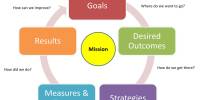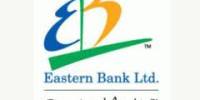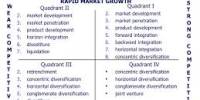Executive summary
This Assignment focuses on Business Strategic Management and Planning in Tesco, one of the giant grocery shops in the UK. The first part depicts the mission and vision statement of the Tesco and also highlights the ethical, cultural, environmental and social perspectives of Tesco. In the second part of this assignment, the Business Environment of Tesco is critically reviewed through two different strategic models: the SWOT analysis. The core competences and sustainable competitive advantage of the company is discussed in the third segment while the strategic development of Tesco over the years underwent many reforms and in the fourth segment some recommendations are given to improve Tesco’s new business strategies.
1.0 Brief Background of TESCO
Tesco is one of the leading grocery shops in the UK founded in 1924 by John Edward Cohen in the East End of London. The name ‘Tesco’, was first used on tea, and was derived from the initials of Cohen’s tea supplier, T E Stockwell, combined with the first two letters of Cohen. Tesco Stores Limited was incorporated in 1932. In 1935, Jack Cohen visited the USA and was impressed by the supermarkets’ self-service system which enabled more people to be served faster, with lower labour costs. In 1947, the Tesco branch in St Albans, a small shop by 21st century standards (200 square meters) was the first Tesco to be converted to self service, although it didn’t immediately catch the public’s imagination. In the early 1960’s, Cohen lobbied Parliament to have the Retail Price Maintenance (RPM) act abolished, efforts supported by Edward Heath. The RPM allowed manufacturers and suppliers to set the price of goods thus preventing large retailers, who could buy in bulk and had greater buying power, from benefiting from economies of scale and undercutting the prices of smaller shops. To get ‘around’ this, Tesco offered another incentive to get customers through the doors.
In 1964, Parliament passed the Resale Prices Act, curtailing RPM, which by 1979 remained in force only on books and pharmaceutical goods. Until the 1970’s, Tesco operated on the ‘pile it high, sell it cheap’ formula Cohen had imported from the USA. However, the market was changing, leaving the company with slim margins and a serious image problem. Under the leadership of Ian McLaren, who succeeded Jack Cohen in 1973, Tesco decided to try something dramatic and different: to become an ‘inspirational mass retailer’. Now Tesco stands far ahead of its competitors because of Tesco’s well-organised strategy and quick response to the customers’ demand.
2.0 Mission, vision, ethical, environmental and social perspectives of Tesco
2.1 Tesco’s mission
Mission is the prime goal of an organisation to achieve the end results. Through minute observation it can be said that Tesco’s mission is to improve more opportunities for the customers offering them loyalty cards and convince them to buy the double even in the economic downturn. Tesco takes pride in vast productivity and continuous improvement of the products.
A research by Sufi and Lyons (2003) from the literature shows that most of the writers are agreed upon defining mission statement as: concern for the customers’ purpose, identity/ image, differentiation factors, corporate values, products, markets and concern for the survival, growth, profitability, company philosophy and employees and social concern.
Tesco is now a brand name meeting the demands of the customers operating throughout the world.
2.2 Tesco’s vision
Vision can be defined as the desired or intended future state of an organization or enterprise in terms of its fundamental objective and/or strategic direction. Vision is a long term view, sometimes describing how the organization would like the world in which it operates to be. Tesco’s vision reflects in their slogan Every Little Helps a lot. As a fast growing company it has gone from simply selling groceries to providing anything from loans to mobile phones. By setting out in all these new directions Tesco endeavours to be close to the customers.
2.3 Ethical
Tesco has successfully been maintaining its commitment for being a good neighbour through stores. Tesco created over 24,000 new jobs around the world in 2008 (Tescos’s websites). Since 2000 the company is regenerating UK communities venturing partnership with local communities. The other contributions that Tesco is making include supporting local economics, promoting active lifestyles, supplier relations, UK code practice, monitoring animal welfare.
Cultural Values

Our Vision guides the direction and the decisions we take as an organisation. Tesco is a company built around customers and colleagues, high-quality assets around the world and multiple opportunities for growth – and these characteristics are central to our Vision for the business.
Strategic planning
Strategic planning is a step by step process with definite objectives and end products that can be implemented and evaluated. Very simply, it is a process by which we look into the future, paint a picture of that future based on current trends, and influence the forces that will affect us.
Strategic planning looks three to five years ahead. It charts a definite course based on strong indicators of what the business environment will be like in those years.
Indicators include census demographic statistics, economic indicators, government policies, and technological advances. They reveal strong trends regarding changes in lifestyles and the economic and political climates, which are important factors influencing the facilities planning and management industry. Some of these trends are potential opportunities, some potential threats, and some are both. Examining the possibilities and formulating strategies to meet the challenges can help the organization take full advantage of opportunities and minimize threats. In short, we can take control of the future. We can use our energies and resources more effectively and conduct our business more successfully, despite changes in the environment.
3.0 Environmental analysis: PESTEL FRAMEWORK
Bonn (2001, pp.63-70)states that ‘when review the organisation’s environment, it requires an understanding of how different problems and issues are connected with each other and what affect one solution in a particular area would have on the areas’.
Strategic planning effects the organisation in various ways. Since as a supermarket Tesco emerged reforming strategic changes from time to time to have a strong voice in the competitive market. There are different strategies that the company shuffled and reshuffled over the years which can be analysed both externally and internally. To analyse external factors in the context of modern business world PESTAL ANALYSIS has been handy to illustrate Tesco’s external environment. PESTAL ANALYSIS includes the aspects such as political, economical, socio cultural, technological analysis. In the following chart they are illustrated:
3.1 Political Factors
Tesco is operating in the UK as well as throughout Europe with around 4000 stores. Because of Tesco’s massive performance and noticeable presence in the market, the company is highly influenced by the political and legislative conditions of these countries.
For employment legislations, the government encourages retailers to provide a mix of job opportunities from flexible, lower-paid and locally-based jobs to highly-skilled, higher-paid and centrally-located jobs (Balchin, 1994). Also to meet the demand from population categories such as students, working parents and senior citizens government imposes new regulations which may create mounting pressure on grocery stores like Tesco and it competitors. Tesco understands that retailing has a great impact on jobs and people factors as traditional stores go out of business or are forced to cut costs to compete. Being an inherently local and labour-intensive sector, Tesco employs large numbers of student, disabled and elderly workers, often paying them lower rates. In an industry with a typically high staff turnover, these workers offer a higher level of loyalty and therefore represent desirable employees.
3.2 Economical Factors
Present economic factors are vastly influencing demand, costs, prices and profits. In the ebb and tide of economic downturn, Tesco has reduced price and added value to draw more consumers even when the unemployment rate is high and demand for many goods is decreasing.
These economic factors are largely outside the control of the company, but their effects on performance and the marketing mix can be profound. Although international business is still growing and is expected to contribute greater amounts to Tesco’s profits over the next few years, the company is still highly dependent on the UK market. Hence, Tesco would be badly affected by any slowdown in the UK food market and are exposed to market concentration risks.
3.3 Social/Cultural Factors
Current trends indicate that British customers have moved towards ‘one-stop’ and ‘bulk’ shopping, which is due to a variety of social changes. Tesco has, therefore, increased the amount of non-food items available for sale.
Demographic The adoption of Electronic Point of Sale (EPoS), Electronic Funds Transfer Systems (EFTPoS) and electronic scanners have greatly improved the efficiency of distribution and stocking activities, with needs being communicated almost in real time to the supplier .
3.4 Environmental Factors
There has been increased pressure on many companies and managers to acknowledge their responsibility to society, and act in a way which benefits society overall (Lindgreen and Hingley, 2003). Hence, by recognizing this trend within the broad ethical stance, Tesco’s corporate social responsibility keeps on working on these vital social issues.
Graiser and Scott (2004) state that in 2003 the government has intended to launch a new strategy for sustainable consumption and production to cut waste as well as reduce consumption of resources and minimise environmental damage. In addition, the focus is now towards; the own-label share of the business mix, the supply chain and other operational improvements, which can drive costs out of the business. National retailers are increasingly reticent to take on new suppliers (Clarke, Bennison and Guy,1994).
Now-a-days consumers are becoming more and more aware of health issues, and their attitudes towards food are constantly changing. In this regard, what Tesco adapts is to accommodate an increased demand for organic products.
3.5 Technological Factors
Technology is a major macro-environmental variable which has influenced the development of many of the Tesco products. The new technologies benefit both customers and the company: customer satisfaction rises because goods are readily available, services can become more personalised and shopping more convenient. Tesco can be applauded for online shopping as its slogan says “YOU SHOP, WE DROP” at the doors.
3.6 Legislative Factors
Various government legislations and policies have a direct impact on the performance of Tesco. For instance, the Food Retailing Commission (FRC) suggested an enforceable Code of Practice should be set up banning many of the current practices, such as demanding payments from suppliers and changing agreed prices retrospectively or without notice (Mintel Report, 2004).
5.0 INTERNAL ANALYSIS OF TESCO: Swot analysis
5.1 Strengths
Tesco’s strengths are hidden in its massive productivity and supply chain. Every door to store concept is the force that has enabled Tesco to reach beyond customer’s expectation. While the sluggish economy is badly affecting the business, small or large, Tesco maintains steady growth and supply even better than before. Loyalty cards have also been strengths of Tesco to encourage the customers into multiple buying. Good reduced price with a bulk of choices has branded.
5.2 Weaknesses
Being a large supermarket, to satisfy customers of all rank, Tesco sometimes sells goods at lowest price that result in huge loss. Tesco’s bulk amount of loans is also great concern for the company. Sometimes to lower down the price Tesco involves in bad bargain with the suppliers which causes non conformance to the customers’ demand and satisfaction and in many cases products become out of stock for time being.
Reliance upon the UK market:
Debt reduction:
5.3 Opportunities
Some of Tesco’s main opportunities are on the internet. No other grocery shops in the UK offer immense opportunity that Tesco can provide. Tesco’s online shopping exceeds the remaining competitors in terms of speed, facilities and availability. Thus Tesco opportunity to flourish its wings in the market has been great threat for Sainsbury, Asda and so on. Even the local small businesses are about to be abolished from the scene.
Non-food retail: The growth in Tesco’s hypermarket format in the UK means that there are expectations of seeing its 13% share of retail sales climb sharply over the next few years.
Health and beauty: Tesco’s UK health and beauty ranges continue to grow, and it is currently the fastest growing skincare retailer in the market.
5.4 Threats
Tesco has changed its threats into opportunities by making sound strategy of cutting down prices on foods. The present recession has widened Tesco’s scope to hold the majority of UK grocery market share. But Tesco feels strong rivalry from Sainsbury and Asda as they have come forward with good low price sometimes offer even better quality.
6.0 Market Development Strategy:
By entering new markets like China and Japan it can serve as a key growth driver of the company’s revenues and expansion strategy. Tesco’s interests in Japan are likely to continue growing in due course, as Asian markets are showing an increase in consumer spending and increased trend towards retailing. These new markets are also demographically high opportunity markets.
In the case of Tesco, one of the suggested strategic options is in international alliances with the local retailers in Asian markets. It will be considered as a method of development and may be formed to exploit current resources and competence. By entering into joint ventures or partnerships, in order to gain a larger economy of scale and larger market presence, Tesco will draw on the extensive local knowledge and operating expertise of the partner whilst adding its own supply chain, product development and stores operations skills to deliver a better shopping experience to customers. However, given the huge scale, potential and complexities of these markets, Tesco may feel that being the first mover is not necessarily an advantage. The success of the partnership will be related to three main success criteria: sustainability, acceptability and feasibility. Sustainability will be concerned with whether a strategy addresses the circumstances in which the company is operating.
Product Development: Diversification
Changes in the business environment may create demand for new products and services at the expense of established provision. Ansoff’s matrix suggests that if new products are developed for existing markets, then a product development strategy has to be considered by the management level of a company. In expanding and diversifying Tesco’s product mix, it is also crucial to implement internal development when new products are developed. The nature and the extent of diversification should also be considered in relation to the rationale of the corporate strategy and the diversity of the portfolio.
7.0 CONCLUSION
In large organizations as Tesco strategy should be analysed and implemented at various levels within the hierarchy. These different levels of strategy should be related and mutually supporting. Tesco’s strategy at a corporate level defines the businesses in which Tesco will compete, in a way that focuses resources to convert distinctive competence into competitive advantage.
APPENDIX
REFERENCES
Clarke I., Bennison D. and Guy C. (1994) The Dynamics of UK Grocery Retailing at the Local Scale, International Journal of Retail & Distribution Management, Vol. 22 Issue 6, pp.11-20;
Datamonitor Report (2003) Food retail industry profile: United Kingdom, January;
Datamonitor Report (2003) SWOT Analysis Tesco PLC, July;
Datamonitor Report (2003) Company Profile: Tesco PLC Analysis, October;
De Toni A. and Tonchia S. (2003) Strategic planning and firms’ competencies: Traditional approaches and new perspectives, International Journal of Operations & Production Management, Vol. 23 Issue 9, pp.947-976;
Drejer A. (2000) Organisational learning and competence development, The Learning Organization: An International Journal, Vol. 7 Issue 4, pp.206-220;
Finch P. (2004) Supply chain risk management, Supply Chain Management: An International Journal, Vol. 9 Issue 2, pp.183-196;
Flavián C., Haberberg A. and Polo Y. (2002) Food retailing strategies in the European Union. A comparative analysis in the UK and Spain, Journal of Retailing & Consumer Services, Vol. 9 Issue 3, pp.125-138;
Graiser A. and Scott T. (2004) Understanding the Dynamics of the Supermarket Sector, The Secured Lender, Vol. 60 Issue 6, November/December, pp.10-14;
Johnson G. and Scholes K. (2003) Exploring Corporate Strategy, 6th ed.,Prentice Hill: London;
Lindgreen A. and Hingley M. (2003) The impact of food safety and animal welfare policies on supply chain management: The case of the Tesco meat supply chain, British Food Journal, Vol. 105 Issue 6, pp.328-349;
MarketWatch (2004) Company Spotlight: Tesco, Datamonitor, September;
Mintel Report (2004) Food Retailing -UK, Retail Intelligence, Nobember;
Myers H. (2004) Trends in the food retail sector across Europe, European Retail Digest, Spring, Issue 41, pp.1-3;
Palmer M. (2004) International retail restructuring and divestment: the experience of Tesco, Journal of Marketing Management, November, Vol. 20 Issue 9/10, pp.1075-1101;
Porter M. (1980) How Competitive Forces Shape Strategy, The McKinsey Quartely, Spring 1980, pp.34-50;
Balchin A. (1994) Part-time workers in the multiple retail sector: small change from employment protection legislation?, Employee Relations, Vol. 16 Issue 7, pp.43-57;
Clarke I., Bennison D. and Guy C. (1994) The Dynamics of UK Grocery Retailing at the Local Scale, International Journal of Retail & Distribution Management, Vol. 22 Issue 6, pp.11-20;
Ogbonna E. and Whipp R. (1999) Strategy, culture and HRM: evidence from the UK food retailing sector, Human Resource Management Journal, Vol. 9 Issue 4, pp.75-80;
Okumus F. (2003) A framework to implement strategies in organizations, Journal of Management Decision, Vol. 41 Issue 9, pp.871-882;
Palmer M. (2004) International retail restructuring and divestment: the experience of Tesco, Journal of Marketing Management, November, Vol. 20 Issue 9/10, pp.1075-1101;
Rowley J. (2003) Beds, insurance and coffee – a complete retail experience from Tesco online, British Food Journal, Vol. 105 Issue 4, pp.274-278;
Rowley J. (2005) Building brand webs: Customer relationship management through the Tesco Clubcard loyalty scheme, International Journal of Retail & Distribution Management, Vol. 33 Issue 3, pp.194-206;
Walters D. (1994) The Impact of the Recession on Retailing Management Decisions and Performance, International Journal of Retail & Distribution Management, Vol. 22 Issue 4, pp.20-31;
Warnaby G. and Woodruffe H. (1995) Cost Effective Differentiation: an Application of Strategic Concepts to Retailing, International Review of Retail, Distribution & Consumer Research, Vol. 5 Issue 3, pp.253-270;

Article Editor:
Asad Saimon















